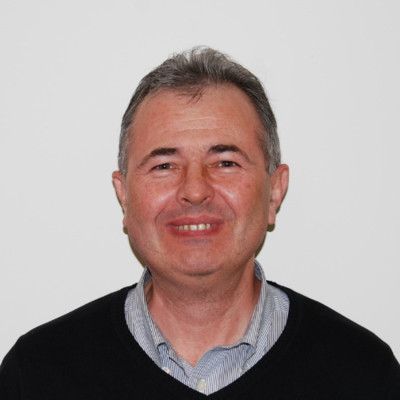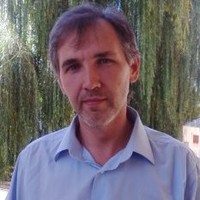Scientists and Engineers Standing in Solidarity: Spotlighting Ukrainian Research Achievements in Optics and Photonics
P. Scott Carney, Chief Science and Technology Officer
Famed astrophysicist Sir Arthur Eddington once said, “The pursuit of truth in science transcends national boundaries. It takes us beyond hatred and anger and fear. It is the best of us.”
As Ukraine bears the brunt of Russian invasion, the Optica community recognizes this truth even more profoundly. Ukrainian scientists and engineers are collaborators, working across disciplines and across borders to advance their respective fields. Though Ukrainian research and engineering institutions have been momentarily silenced by the conflict, the achievements of our Ukrainian colleagues, peers, collaborators, teachers, mentors, and students live on in their impact.

Oleg Yaroshchuk
Take, for example, the work of Oleg Yaroshchuk, a senior research scientist with the Institute of Physics of the National Academy of Sciences of Ukraine. Over the course of his career, Yaroshchuk has authored more than 230 research and technical papers and developed 29 patents. His collaborations have ranged from optical devices for augmented and virtual reality at Facebook to a procedure for liquid crystal (LC) alignment in microcavities, which resulted in a new class of LC sensors, with many more scientific advancements achieved over the course of his career. He has served as a researcher, scholar, and/or consultant at institutions in Canada, France, Germany, Japan, Korea, the United States, and more, demonstrating the global nature of science.
Or consider Andrey Goloborodko, an associate professor at Taras Shevchenko National University of Kyiv, who in January 2022, published a paper in Optica’s Journal of the Optical Society of America A that theoretically investigates the “accuracy of measuring optical aberrations in the random phase field by the Talbot wavefront sensor.” With more than 100 publications released and another three expected to be published by June, Goloborodko’s research continues to influence science, despite the ongoing conflict.

Andrey Goloborodko
There are also the efforts of the team of Dariia Herasymova, Sergii Dukhopelnykov, and Alexander Nosich of the Laboratory of Micro and Nano Optics, Institute of Radio-Physics and Electronics NASU, Kharkiv, Ukraine, which resulted most recently in a paper published in September 2021 in the Journal of the Optical Society of America B. Their work explored “near-infrared range diffraction radiation from a modulated beam of particles passing between two identical dielectric circular nanowires covered with graphene,” revealing that a “shift of the beam trajectory from the central-symmetric position enables the excitation of additional resonances on the modes, which remain ‘dark’ otherwise.”
Despite conflict, science and engineering continue to progress, and these stories only scratch the surface of the impact made by Ukrainian optics and photonics scientists and engineers. These examples speak to the ongoing effects of scientific collaboration and opportunity. Indeed, science transcends borders, and the efforts of Ukrainian scientists and engineers will continue in the future, with support from the Optica community.
The Optica community stands with those who seek knowledge, those who forge solutions, those who strive for peace. We will continue to amplify the achievements of Ukrainian optics and photonics scientists and engineers in support of a swift end to this conflict. We seek a resolution that will enable these scientists and engineers to reengage in research and rebuild, so they may continue making important contributions to humanity.
